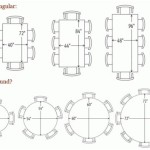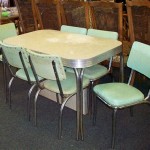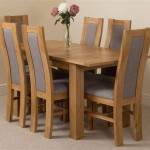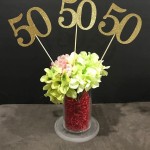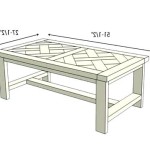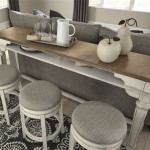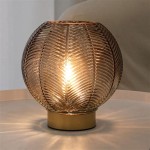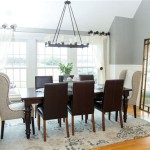Solid Wood Side Tables: Elevating Living Room Aesthetics and Functionality
The living room serves as a central gathering space within a home, a haven for relaxation, entertainment, and social interaction. Careful consideration of furniture selection directly contributes to the room's ambiance, functionality, and overall aesthetic appeal. Among the essential pieces that enhance a living room's usability and visual harmony, the side table holds a prominent position. Opting for solid wood side tables introduces enduring quality, timeless elegance, and a touch of natural warmth to the space. This article delves into the advantages of choosing solid wood for side tables in a living room, exploring design considerations, wood types, and maintenance practices.
Durability and Longevity of Solid Wood
Solid wood furniture distinguishes itself through inherent durability and the potential for lasting longevity. Unlike engineered wood products, which are often susceptible to damage from moisture, impact, and wear, solid wood exhibits superior resistance to degradation. A solid wood side table, carefully crafted and properly maintained, can withstand daily use and retain its structural integrity for decades. This resilience makes solid wood a cost-effective choice in the long run, as it minimizes the need for frequent replacements.
The inherent strength of solid wood allows it to bear weight effectively without bending or breaking. This is particularly crucial for side tables, which often support lamps, books, beverages, and other items. The robust nature of solid wood also makes it more resistant to scratches and dents, ensuring that the table maintains its aesthetic appeal even with regular use. Furthermore, minor surface imperfections can often be easily repaired with simple sanding and refinishing techniques, further extending the table's lifespan.
The longevity of solid wood is not solely dependent on its inherent properties but also on the quality of craftsmanship. Well-constructed solid wood side tables feature robust joinery techniques, such as dovetail joints, mortise-and-tenon joints, or robust screw and glue applications. These methods create strong and secure connections that prevent the table from becoming loose or wobbly over time. A reputable furniture maker will prioritize these details, ensuring that the side table is built to withstand the rigors of daily life.
The environmental factors within a living room also play a significant role in the lifespan of solid wood furniture. Maintaining a stable humidity level is essential to prevent the wood from expanding or contracting excessively, which can lead to cracks or warping. Avoiding direct exposure to sunlight is also crucial, as prolonged exposure can cause the wood to fade or discolor. By taking these precautions, homeowners can ensure that their solid wood side tables retain their beauty and structural integrity for many years to come.
Aesthetic Versatility and Timeless Appeal
Solid wood possesses an innate aesthetic versatility that allows it to seamlessly integrate into a wide range of interior design styles. Whether the living room embraces a traditional, modern, rustic, or eclectic aesthetic, a solid wood side table can serve as a complementary element that enhances the overall visual harmony. The natural grain patterns, unique color variations, and inherent warmth of solid wood create a sense of authenticity and sophistication that is difficult to replicate with synthetic materials.
The timeless appeal of solid wood stems from its connection to nature and its ability to evoke a sense of history and tradition. Unlike trends that come and go, solid wood furniture remains relevant and stylish across generations. A well-chosen solid wood side table can become a cherished heirloom, passed down through families and appreciated for its enduring beauty and craftsmanship.
The design possibilities for solid wood side tables are virtually limitless. Tables can be crafted in a variety of shapes, sizes, and styles to suit individual preferences and the specific needs of the living room. Simple, minimalist designs can complement modern interiors, while ornate, carved tables can add a touch of elegance to traditional spaces. The wood can be stained in a wide range of colors to match existing furniture or create a striking contrast. Furthermore, solid wood can be combined with other materials, such as metal, glass, or stone, to create unique and visually interesting designs.
The natural beauty of solid wood is further enhanced by the application of various finishes. A clear finish can showcase the wood's natural grain patterns and color variations, while a stained finish can deepen the color and add richness. A painted finish can provide a more contemporary look, while a distressed finish can create a rustic, aged appearance. The choice of finish can significantly impact the overall aesthetic of the side table, allowing homeowners to tailor it to their specific design preferences.
Beyond its aesthetic qualities, solid wood also possesses a tactile appeal that contributes to its overall desirability. The smooth, warm surface of solid wood invites touch and creates a sense of comfort and connection. The weight and solidity of solid wood furniture also convey a sense of quality and craftsmanship, enhancing the overall experience of using the piece.
Wood Types and Their Characteristics
The selection of wood species significantly influences the appearance, durability, and overall character of a solid wood side table. Different wood types possess distinct grain patterns, color variations, and hardness levels, each contributing unique qualities to the piece. Understanding the characteristics of common wood species empowers homeowners to make informed choices that align with their aesthetic preferences and functional requirements.
Oak: Known for its strength and durability, oak is a popular choice for solid wood furniture. It features a prominent grain pattern and a warm, golden color that can be stained in a variety of shades. Oak is highly resistant to warping and splitting, making it a reliable option for side tables that will be subjected to daily use.
Maple: Maple is a hardwood with a fine, uniform grain and a light, creamy color. It is known for its exceptional hardness and resistance to dents and scratches. Maple is often used in contemporary designs due to its clean, modern aesthetic. It takes stain well, allowing for a wide range of color options.
Cherry: Cherry is a hardwood prized for its rich, reddish-brown color and smooth texture. It has a distinctive grain pattern that becomes more pronounced with age, adding character and depth to the wood. Cherry is relatively soft compared to oak and maple, but it is still durable enough for use in side tables. It is often used in traditional and formal settings.
Walnut: Walnut is a hardwood with a dark, chocolate-brown color and a striking grain pattern. It is known for its strength, stability, and resistance to decay. Walnut is a luxurious wood that adds a touch of elegance to any space. It is often used in high-end furniture designs.
Pine: Pine is a softwood with a light, yellowish color and a knotty grain pattern. It is a more affordable option than hardwoods like oak or maple. Pine is relatively soft and can be easily dented or scratched, but it can be protected with a durable finish. Pine is often used in rustic or country-style interiors.
Beyond these common wood species, a variety of other options are available, each with its unique characteristics. When selecting a wood type, it is essential to consider the desired aesthetic, the level of durability required, and the overall budget. Consulting with a furniture maker or woodworker can provide valuable insights and guidance in making the best choice for a solid wood side table.
The origin and harvesting practices of the wood are also crucial considerations. Choosing sustainably harvested wood ensures that the furniture is not contributing to deforestation or environmental degradation. Look for certifications from organizations like the Forest Stewardship Council (FSC) to ensure that the wood is sourced from responsibly managed forests.
In summary, solid wood side tables represent a worthwhile investment for any living room. Their durability, aesthetic versatility, and timeless appeal contribute to both the functionality and visual harmony of the space. By carefully considering design elements, wood types, and maintenance practices, homeowners can select solid wood side tables that will provide years of enjoyment and enhance the overall ambiance of their living room.

Solid Wood Side Table Sofa Cabinet Small Unit Living Room Narrow Walnut Double Layer Storage Shelf

Solid Wood End Table Square Side Nightstands With Storage

Solid Wood Sofa Side Table With Storage

Rustic Coffee Solid Wooden Slim Narrow Side Sofa Handmade End Table Various Colours And Sizes Etsy

Boston Solid Wood Rattan Side Table With One Drawer

Classic Design Modern Solid Wood Living Room Side Table Wooden Made In Com

Solid Wood Side Table Modern Minimalist Living Room Storage Sofa Cabinet Home Retro Glass Mobile Coffee

Hallowood Furniture Waverly Oak Round Side Table Solid Wood Bedside Light Lamp Occasional Small Plant Sofa For Living Room Spaces

Fadzai Solid Wood Side Table Cozymatic Hk

Shop Solid Wood Side Tables For Living Room Fleck

